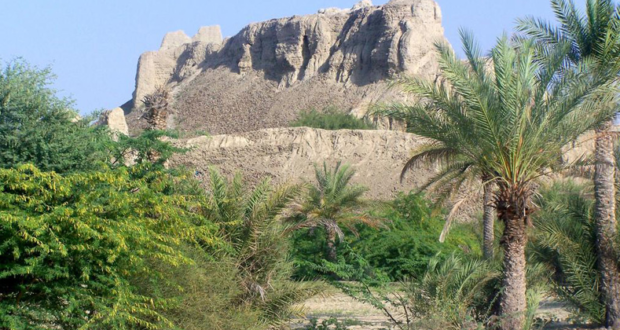By: Israr Luqman
After man evolved from apes; they started their journey of migration from Africa to middle Asia to South Asia where the become more civilized and formed civilization. Among which Balochistan is one of the oldest known lands in the world ranging from the earliest settlments of man and Turbat lying in Makrun region is too a landmark of old entities. In Turbat there lay an old entity ‘Meri Kalat’ ranging from 6,000 years ago is older than the pyramids of Egypt which resmbles with the earliest known settlements in the entire history of human kind. Miri Kalat can be dated back to 5000 BC- a prestigious site ever for archeologists to the pyramids of Egypt which resembles with the earliest known settlements in the entire history of human kind. Miri Kalat can be dated back to 5000 BC the pyramids of Egypt which resembles with the earliest known settlements in the entire history of human kind. Miri Kalat can be dated back to 5000 BC.Miri Kalat also known as Ponnu fort, is located in the west of Turbat that is a prestigious site ever for archeologists to solve the mysterious of ancient history.
Miri Kalat also known as Ponnu fort, is located in the west of Turbat.The history of ‘Miri Kalat’ is a mystery because of lack of much historical data available on the fort, however, folk stories reveal that the fort was constructed with three types of different blocks. Miri Kalat is the second oldest fort other than Mehrgarh dated 7000 BC to 3000 BC.
The fort is 80 feet high and consists of four floors. The ground floor was for the reservation of the army and it has about 200 rooms. The first floor was for the legistors , the second floor was used to store weaponry and groceries, and the last floor was the king’s residence.
During the construction of Miri Kalat stones were brought one-by-one from Koh-e-Murad to Miri, the distance between which is 25 kilometers.
According to archelogists there were twelve races that ruled the ‘Miri Kalat’ and Balochs were the one of them and their different tribes ruled over Miri Kalat. The first king were Hoths and ruled for nine generations. Some other tribes, which governed over Miri Kalat were the King of Kulanch and the King of Gichki tribes.
Archaeologists around the world are interested in learning about the fort’s history. They have found well crafted ceramics with characteristics. Be in the arts, the people of Miri Kalat were well awing for the world. Their sculptures were dazzlingly beautiful that resmebles to the Iranian Plateau ceramics than those found in other parts of Pakistan. Ceramics like Miri have also been found in the Bampur Valley.
The Kerman and Miri wares’ allocations appear to display that in the first half of the 4th century BC two major ceramic traditions governed the south-eastern regions of the Iranian Plateau, the previous being dispersed and manufactured in Kerman and the Bampur Valley. A some pottery such as brownish light red and grey wares, or different shapes and identical adornments were colored, wide globular jars and bowls in thicker glass, decorated with paints and ridges were of good quality and were discovered in Miri Kalat.
Archaeologists have discovered sea-shell objects and fish bones at Miri Kalat that indicates that the people imported or exchanged food, with the seafood from Oman. Miri Kalat, was center of trade at that time and dominated the upland trade. Metal minerals, such as bronze, copler, silver, gold and lead, were carried from neighboring areas to the cities. Miri Kalat Fort is famous for a phenomenal folk tale of Sassi and Punnu and its compressive and impeccably crafted poetries. The tragic love story of Sassi and Punnu makes Miri Kalat famous.
Miri Kalat is phenomenally known because it has one of the oldest cultures of Balochistan that represents their history and its dominance over a huge area of trade in the Indus Plains. The popular and thumping story of Sassi and Punnu; has a great influence on the Balochi literature due to its poetic language and the resistance of a Mir (prince) is the symbol of Miri Kalat.
As a poet says in some heart touching poetic words :
“Punnu kalat e Miri a dega durushome beday
Sassi wafae naam a gal o balo sambaeth
Deha bare beya halan wash zemeren kaputh
Kech a chenal sabzeth o kadshaal o sambaeth”
Published in The Balochistan Point on February 4, 2023
 Balochistan Point Voice of Nation
Balochistan Point Voice of Nation




